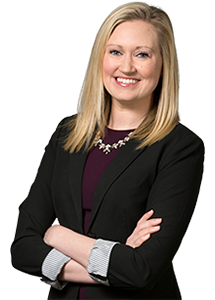Yesterday, the Department of Labor (“DOL”) published its temporary rules regarding Paid Leave under the Families First Coronavirus Response Act (“FFCRA”). The 124-page temporary rule, which is immediately in effect, provided much of the same information we have already seen under the questions and answers DOL has been publishing, but also clarified some additional matters. The highlights:
- What is a “Federal, State, or local quarantine or isolation order”?
- This includes “shelter in place” and “safer at home” orders. However, if such an order does not prevent the employee from attending work or if, because of such order, the employer is closed, the employee is not eligible for paid leave. So, if a business is considered “essential” under state orders and employees are allowed to travel to work, employees would not be entitled to paid leave due to such order under the FFCRA. Similarly, if employees are able to telework, a “shelter in place” or “safer at home” order would not prevent them from working remotely and would not entitle them to paid leave. Finally, employers that are completely closed due to such orders also would not have to provide employees with paid sick leave if there is no work for the employee to perform.
- What does it mean that an employee has been advised by a healthcare provider to self-quarantine?
- This includes advice that the employee self-quarantine because he or she has coronavirus, may have coronavirus, or is particularly vulnerable to COVID-19. This may include employees who are older, pregnant, or suffer from particular medical conditions. However, employers should not make an assumption that any individual is unable to work based on their protected class (e.g., age, pregnancy, disability).
- What does ability to telework mean?
- This requires that the employer have work for the employee to perform, that the employer permits the employee to perform that work remotely, and there are no extenuating circumstances that would prevent the employee from performing that work.
- Who is an “individual” that the employee can care for and receive sick leave?
- An immediate family member, a roommate, or a similar person with whom the employee has a relationship that creates an expectation that the employee would care for the individual if he or she self-quarantined or was quarantined.
- What does caring for a son or daughter whose school or place of childcare is closed mean?
- This leave is not available if another suitable person is available who can care for the child during the period of leave.
- Can an employee take intermittent leave under the FFCRA?
- In all situations, the employer and the employee must agree to intermittent leave; it is not required. Additionally, in instances where an employee is working at the employer’s facility (i.e., is not teleworking), intermittent leave can only be used to care for a child whose school or place of childcare is closed or whose childcare provider is unavailable due to COVID-19.
- Can employers require that employees use other paid leave while on EFMLA?
- During the final 10 weeks of EFMLA, an employer may not require the substitution of paid leave. During these ten weeks, the sides may agree that available paid leave can supplement the 2/3 pay, such that the employee receives full pay. However, during the first two weeks of EFMLA, an employer may require substitution of paid leave. Therefore, employers can require that, during the first two weeks of EFMLA, employees use their paid sick leave under the FFCRA and any available paid leave, such that use of the additional leave would bring employees to their full wages. Employers should remember, however, that the tax credit will only be paid for 2/3 of the employee’s wages, up to $200 per day.
- What are the notice requirements under the EFMLA?
- Employers are not required to respond to an employee’s requests for EFMLA with the Notices of Rights and Eligibility and Designation Notices as they must with normal FMLA. However, employers should have an FFCRA request form that requests information and documentation regarding the request for leave. This will allow employers to provide such information to the IRS so that they can receive the tax credits under the FFCRA. Additionally, employers must retain this documentation for four years.
O’Neil, Cannon, Hollman, DeJong and Laing remains open during this time and is here to help. We encourage you to reach out with any questions, concerns, or legal issues you may have, including those related to coronavirus or the drafting of FFCRA policies or leave request forms.






